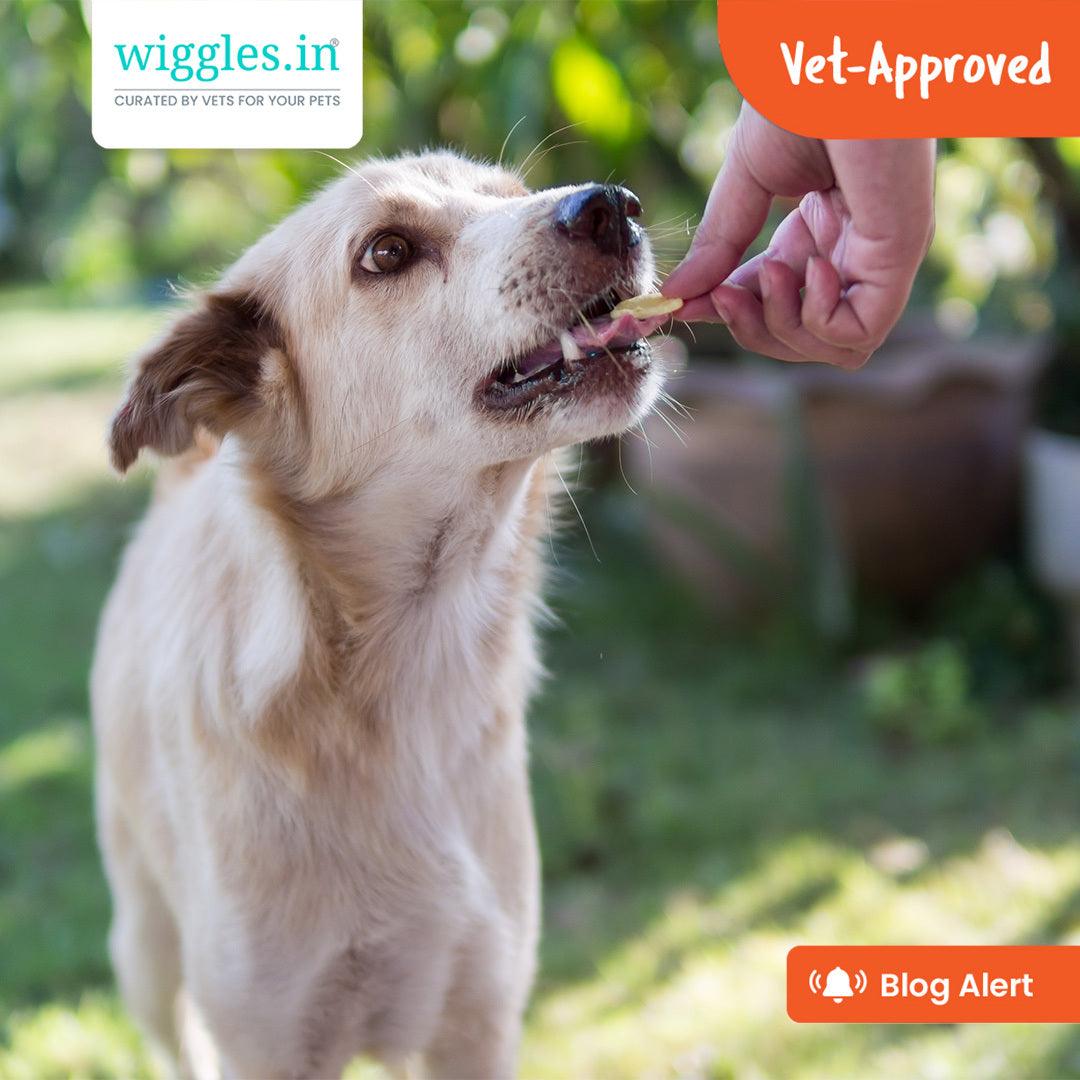How many times have we given dogs leftover rotis or bought some cheap biscuits to feed the streeties? It’s such a common occurrence that no one would blink an eye if they saw it happening. What many Indians are not aware of is that gluten is not the right food for dogs.
Although dogs can eat biscuits, it doesn't necessarily mean that they should eat much of it as they still need a balanced diet. Too many biscuits will upset their stomach. They have minimal nutrition and therefore aren't the best option for your furry friend.
Dogs do need sugar in the form of carbohydrates which is further broken down into glucose in their body but they should only be given biscuits that are free of gluten, wheat flour, sugar, salt, palm oil, chemical preservatives, artificial flavors, meat byproducts & raisins.
Chapati and roti or flatbread on the other hand aren’t considered toxic. However, for dogs there really aren’t any benefits to feeding it to them, even if it’s as an occasional treat. The flavored flatbreads should also be kept away from them since they may contain ingredients that are harmful to pets.
Flatbreads contain a high amount of empty calories which is an indication that there are little-to-no nutrients a dog would gain after eating them.
How gluten works inside a dog’s gut

Gluten sensitivity is more than enough to wreak havoc in a dog’s gut & leave a damaging impact on a pup's digestive system, sometimes even overall health.
This happens due to a reaction with the protein element found in grains, such as rye, barley & wheat which could lead to a number of chronic symptoms.
The undigested gluten particle is of small size and is treated like a foreign particle in the body of a dog instead of getting flushed out. The gluten particle stays in the body making its own space and flattens the microvilli, a finger-like part present in the small intestine that helps create more space for nutrition absorption.
This is why the gluten present in roti, biscuits, etc will remain undigested while reducing the dog’s digestion efficiency.
Ultimately, it all comes down to our responsibility as dog parents to be informed about the various symptoms which indicate our pet's abnormality.
Symptoms of gluten sensitivity
- Stomach Problems
Excessive mucus in stools can be the first sign that your pup has an issue with gluten. Stomach issues like diarrhea, loose stools, gas & even vomiting can appear as a symptom.
- Skin conditions
Signs of dry and flaky skin, bumps, and rashes are all classic signs of suffering from food intolerance. Whilst these signs of sensitive skin can be linked to seasonal allergies, these observations should not be disregarded.
- Excessive scratching
Before detecting any skin conditions, you may notice your dog scratching excessively. Spotting this behavior is worthy of investigating if gluten is to be blamed.
- Foot chewing
Another sign of a gluten allergy is red and inflamed paw pads. Subsequently, dogs suffering from a similar allergy may repeatedly lick or chew their paws.
- Coat condition
A dull coat can prove to be a sign of gluten intolerance due to a lack of absorption of nutrients. Fur loss may also be experienced due to excessive scratching.
- Weight loss
It’s problematic for dogs with gluten allergies to absorb nutrients from their foods. In case your dog is losing weight at a rapid rate despite feeding them the normal amount of food as normal, gluten may be the culprit.
- Chronic ear infection
Yeast build-up can cause ear infections in your pooch which can appear due to over-consumption of gluten. The most efficient way to spot this is to look for dark, smelly waxy debris in their ears or for them shaking their head.
All combinations of the aforementioned symptoms can be assumed to be a sign that your dog is allergic to gluten.
How to avoid the above symptoms

If you happen to have a gluten-intolerant dog you can start by putting them on a gluten-free diet. If this alleviates their symptoms it is highly likely that gluten intolerance is the cause of your pooches discomfort.
The first step after taking notice of possible gluten intolerance is to switch their usual diet with a gluten-free one. If the symptoms rescind, the cause of your pooches discomfort is likely to be gluten intolerance.
Your dog will be better off being fed his regular dog meals or meals which have absolutely no gluten.
Here are some other alternatives which can serve as the middle ground to provide full nutrition to your dogs instead of relying on gluten-based biscuits and rotis.
- Boiled Chicken
- Rice
- Peanut butter
- Boiled eggs
- Beef
- Fish
- Vegetables
- Fruits
The most harmful ingredients to avoid by all means are chocolate & raisins since they contain a type of sugar called xylitol which is equivalent to poison for a dog. It makes the blood sugar levels of a dog drop significantly low which makes them more prone to seizures, weakness, loss of coordination, and even liver failure over time. However,
Although grain-free & gluten-free are two words that are often used interchangeably, that doesn’t symbolize them being the same thing.
There are no traces of rice, barley, or wheat in a grain-free diet. In accordance with this statement, all “grain-free” products should be assumed to be automatically gluten-free, however, it’s not a guarantee. It's a high priority for pet owners to check the ingredients while buying food for a dog with gluten intolerance. Avoid products that contain the following
Bran
Bulgar
Couscous
Flour (plain, self-raising, wholemeal, malted)
Semolina
Wheat germ (oil is safe)
Cereal binder/filler
Modified starch
Durum wheat
Farro
Kamut/spelt
Rye
Barley
The good news is that you can manage the condition effectively by keeping gluten out of your dogs' diets. This won't always be easy with the ever-hungry pups around but if you have been busily browsing the internet for information regarding the actions to be taken for gluten intolerance, you can stop.
The simplest & safest way to cover all bases is to keep your furry friend gluten-free. There are many more choices in terms of allergy-appropriate pet foods out there due to the growing awareness around this condition.
If you want to know more about the science of dog nutrition you can read it here.
Get your hands on the right nutrition for every puppy here.
Team Wiggles has started an initiative called #BondedByBlood through which we are trying to create an online repository of ready pet blood donors. Register your pet today and save a life tomorrow.
*Disclaimer: This blog is vet-approved and includes original content which is compiled after thorough research and authenticity by our in-house team of vets and content experts. It is always advisable to consult a veterinarian before you try any products, pet food/treats, or any kind of treatment/medicines on your pets, as each pet is unique and will respond differently.



















